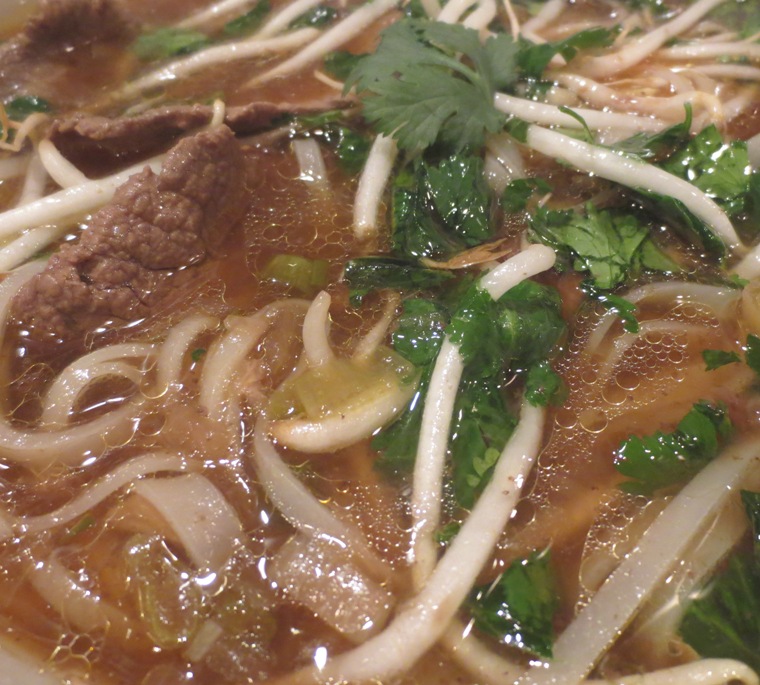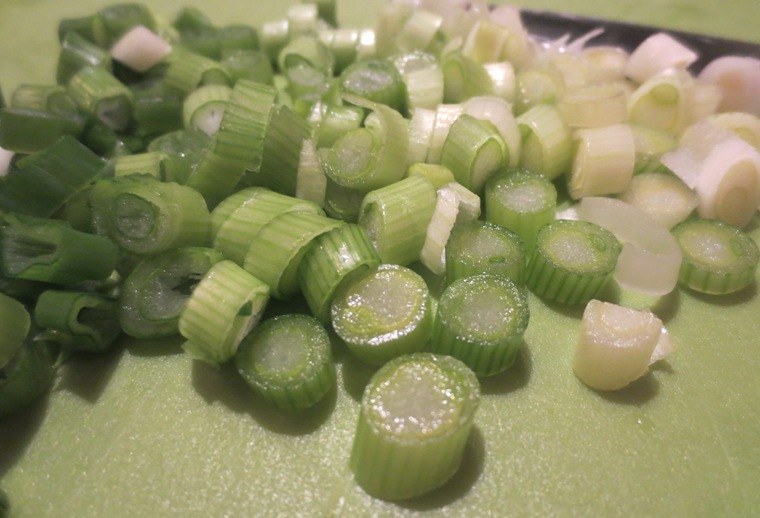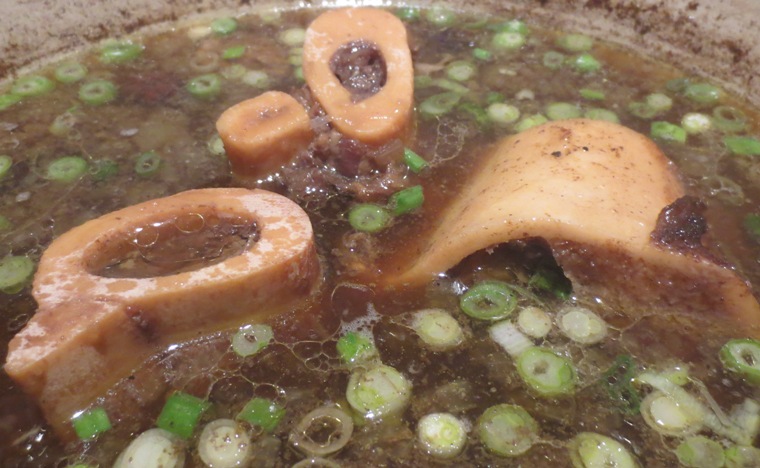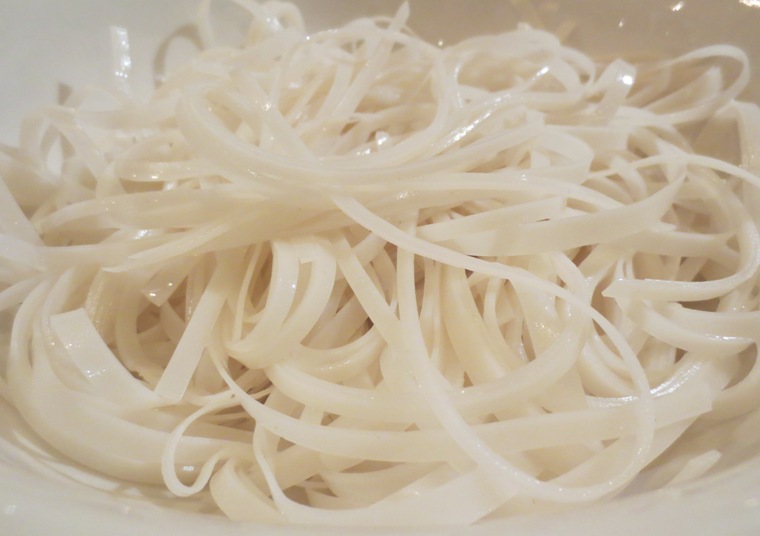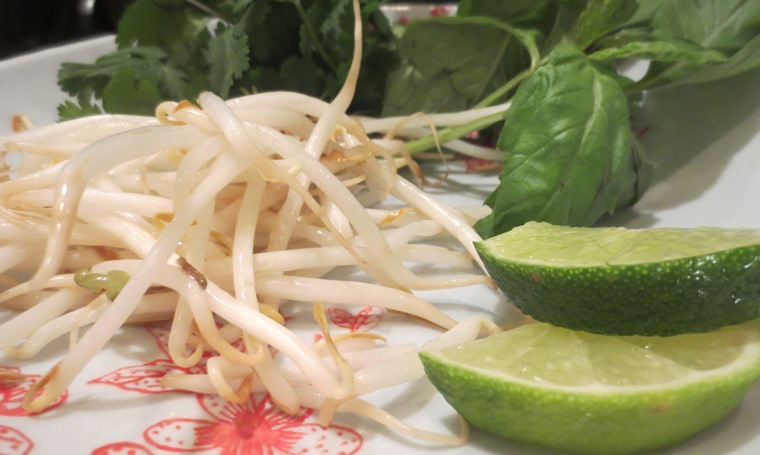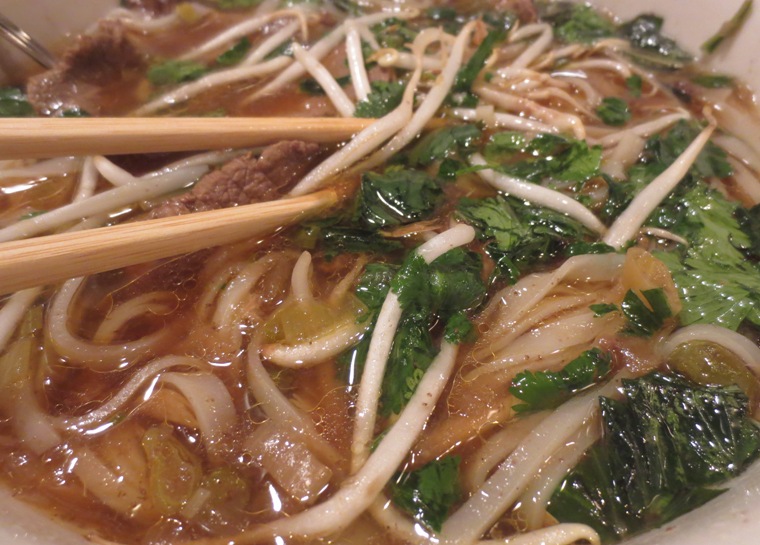One of my favorite dishes in winter is a steaming bowl of Vietnamese pho. It’s like a spicy hug from a pocket of paradise. Usually, I leave the making of it to the pros, but decent Vietnamese restaurants are not a dime a dozen in upstate New York (hence frequent trips to Boston – and yes, I have made at least one trip solely for the purpose of procuring pho).
During a quiet weekend, while feeling slightly under-the-weather, I decided to be brave and try my hand at the broth, though naysayers had warned it was a tricky one. I didn’t find it to be such – it’s more about the long simmer time (6 to 10 hours) that gives it a bad cooking name. I happen to love long simmer times, so this was perfect for a chilly weekend project. What follows is my modified recipe and method. Purists will likely scoff at the many shortcuts and anomalies, but fuck ’em, this shit was good.
INGREDIENTS:
- 3 pounds beef soup bones
- 1 onion, sliced
- 5 slices fresh ginger
- 3 pods star anise
- Dash cinnamon
- 2 1/2 tablespoons fish sauce
- 4 quarts water
- 2 cans beef stock
- 1 (8 ounce) package dried rice noodles
- 1 1/2 pounds beef top sirloin, thinly sliced (or pounded into very thin slices)
- 1/2 cup chopped cilantro
- 1 tablespoon chopped green onion
- 1 1/2 cups bean sprouts
- 1 bunch Thai basil
- 1 lime, cut into 4 wedges
- 1/4 cup hoisin sauce (optional)
- 1/4 cup chili-garlic sauce (such as Sriracha) (optional)
METHOD:
Many recipes called for roasting the beef bones and onion beforehand, but I’m a one pot, Andy-clean-up kind of guy, so I didn’t want to rev up the oven and ruin a baking sheet. Instead, I gave up that smoky stuff for a more intense broth in other ways, starting with the addition of 2 cans of beef broth to the 4 quarts of water. I also sprinkled a dash of cinnamon into the mix (it goes so well with the star anise) to add one more note of flavor. This is supposed to be a pungent and spicy dish.
The process was relatively simply: boil the bones in the water and stock for about three hours. Add the onion, ginger, star anise, cinnamon, and fish sauce and simmer for about six hours more. Obviously this can be adjusted for reality, but this is the best time-frame from which to elicit the most flavor (of course you can go longer if desired – you may have to add more water along the way so it doesn’t boil down too much).
Separately, soak the rice noodles in lukewarm water for about an hour. They should be malleable, yet somewhat firm (they will feel underdone even after an hour, but don’t worry because the boiling broth will finish the process beautifully).
As you near the end of the simmer period, add the green onion and cilantro to the broth (I also reserved a small bunch of cilantro for additional garnish later on). Traditionally, and if you have an excellent and reliable butcher, you would put the thin meat slices into the bowl and let the broth do the cooking. Failing such a supply, I dropped the meat into the broth on the stove and let it boil for a bit. (I’ll sacrifice some tenderness for safety when Price Chopper is involved.)
To plate up, drop a decent helping of the noodles into a large bowl. Spoon in the simmering broth until it covers them well, along with several pieces of beef. This will finish cooking the noodles nicely, and then it will be time for the real magic to begin.
As if after my own heart, it’s the accessories that really make this dish special – and if there’s one thing you can’t forego when having pho it’s this collection of fresh ingredients. In a restaurant, you’ll usually be served the dish of amendments first, piled high with bean sprouts, Thai basil, lime wedges and little bowls of hoisin and Sriracha. These accoutrements are vital for such a richly-flavored broth, lending a vivid contrast to the flavor at hand.
I simply tear the basil apart with my hands and drop it into the broth, along with a handful of sprouts. A few squeezes of lime is enough to spruce up the surface, then I stir in some hoisin and Sriracha. For my home-grown version, I tore up the additional cilantro since I love it so much. The end result was decent enough – and an almost-authentic approximation of the pho I’d only had at restaurants.
I’m not always great in the kitchen, but sometimes I’m pretty good. This was one of those happy times, and this is a dish I’ll make again.
Back to Blog
